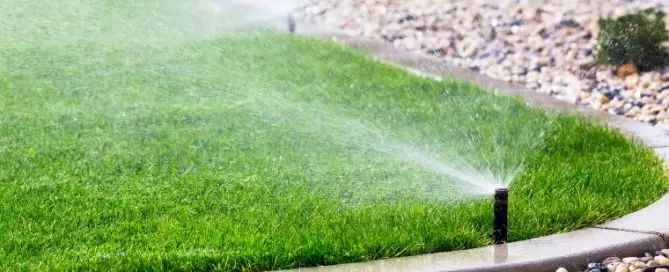
3 Common Summer Lawn Diseases & What You Can Do About Them
There are many ways for fungal disease to develop in your yard. It may not be getting enough water, getting too much water, suffering from varying humidity and temperature levels or have soil that is too compact. No matter the cause, fungal diseases can pop up at any moment, and it is important to recognize them right away!
If there are multicolored patches in your yard, thinning areas of grass or soil that is wet or slimy in appearance, your yard has most likely been compromised. However, depending on the type of fungus, there are many ways to deal with this pesky problem. Check out these three common lawn diseases and what you can do about them!
Red Thread
If you notice pink or red-brown fibers embedded in your wilted lawn, odds are you are facing red thread. This fungal disease is caused by low nitrogen levels in the soil, which allows the red thread to grow.
Red thread disease usually strikes during spring and summer months, most commonly between late-April and mid-June. During this time, nitrogen levels are depleted from rapid lawn growth due to favorable temperatures—without nitrogen to prevent its growth, red thread is able to flourish.
The best way to combat this issue is to fertilize your lawn during the fall in an ongoing feeding program that lasts until Spring. The extra boost of nitrogen will help nurture your lawn for the upcoming season. When spring comes, lay down 0.2 lbs. of nitrogen per 1,000 sq. ft. of lawn. This is an effective treatment, but it requires patience, as it may take a few years to completely eliminate your red thread problem.
Dollar Spots
Dollar spots are very adaptable forms of fungi. Infecting many different types of grass, this disease produces small silver-dollar sized circles all over your yard. Dollar spots may not look very threatening, but they can cause serious damage to your lawn, killing the turf all the way to the root! This causes unsightly masses and potential scarring.
Dollar spots are more likely to form when temperatures are in the mid-60s while the prime time for these ferocious fungi to flourish is when temperatures rise into the 70s and low 90s. They are formed by low soil moisture in high humidity, low nitrogen levels and mowing your grass too short in hot weather. Be sure to take care of your lawn, and consider a personalized fertilizer blend to use regularly in order to prevent your lawn from developing the disease.
The best way to get rid of dollar spots is to water your lawn generously. The fungus prefers to grow in soil with low moisture levels, so watering your grass is essential. Additionally, make sure that your fertilizer contains the appropriate amount of nitrogen for your lawn. Consider contacting a professional about customized fertilizer plans.
Fairy Ring
Fairy rings get their name from Irish folklore that a ring of mushrooms is left behind by dancing fairies. Today we know that these rings are actually created by an underground fungus. The fungus grows outward in a circle and mushrooms sprout on the outer edges of the ring.
Aside from their distracting appearance, fairy rings also extract the soil’s nutrients, which causes the grass to die. Additionally, the underground fungal component creates a thick barrier that keeps water from reaching your grass’ roots. Consider calling a professional if you notice fairy rings forming in your lawn, as product treatment is the most effective method to eliminate them.
If you are experiencing any of these harmful lawn diseases, give All Wet a call at (973) 862-4175. We would be happy to restore your lawn to its full beauty!

